Two paths of tokenization: How blockchain and centralized finance will shape finance’s future
Key Takeaways
- Tokenization is reshaping mainstream finance, gaining traction from funds to equities.
- Blockchain-based, centralized, and hybrid approaches each bring distinct benefits and trade-offs.
- Which path prevails — or how they are combined — may depend on regulatory frameworks or technological developments.
Tokenization in finance, first tested in crypto markets in 2017, is steadily becoming mainstream. From a blockchain experiment, a natural evolution into pilots across bonds, funds, and equities has gradually pulled tokenization into traditional finance. By the early 2020s, banks and asset managers were testing tokenized money-market funds, bond issuance, and even tokenized US Treasury bill exposure — taking tokenization beyond experimentation and into live financial products.
Today, clearinghouses are exploring tokenized collateral. Nasdaq has filed to trade tokenized stocks, and BlackRock already runs a USD 2 billion tokenized money-market fund while examining tokenized ETFs.
These developments show tokenization progressing in different forms and at different speeds, from proposals to regulatory filings to live adoption, pointing toward a more digital, programmable market infrastructure. While much of the early activity has used distributed ledger technology (DLT), mostly in the form of blockchains, the future of tokenization is no longer confined to them. DLT is no longer the only path, as centralized and hybrid models are also emerging.
Blockchain tokenization vs centralized tokenization: Key differences
Let’s examine some of the ways tokenization can evolve, along with the advantages and disadvantages of each approach.
DLT tokenization: benefits and limitations
The first track builds on those early experiments with DLT. Here, blockchain-based tokenization enables instant settlement, fractional ownership, and programmable features. BlackRock’s BUIDL fund, launched in 2023 on J.P. Morgan’s Kinexys blockchain, tokenizes shares of a USD money-market fund so they can settle instantly and plug into digital finance networks. Later that year, those shares were used as collateral in a Barclays trade through J.P. Morgan’s Tokenized Collateral Network.
Beyond funds, bond pilots like the World Bank’s bond-i and the EIB’s digital bond have shown how blockchain has the potential to support key lifecycle processes like issuance, transfers, and even coupon payments.
The broader promise of DLT-based tokenization is faster settlement, programmable instruments, fractional ownership, and access to asset classes that were previously difficult to trade.
But challenges remain. Scalability is one of them: public blockchains (for example, Ethereum) cannot yet handle the high transaction volumes of financial markets. There is evidence of alternative Hashgraph platforms (e.g Hedera) being significantly faster and less centralized, however the unpredictable market volumes of transactions are still problematic. Privacy is another: while transparency is inherent to blockchains, trading desks often require confidentiality, leading to permissioned setups that dilute decentralization. Most critically, post-trade integration is complex. Today’s clearing and settlement infrastructure was not designed for tokenized assets, and bridging the two requires new settlement assets (such as tokenized cash, or CBDCs), updated legal frameworks, interoperability, or costly system upgrades.
Together, these hurdles explain why tokenization has been easier to pilot than to scale — moving from controlled, low-volume experiments to full integration in high-volume markets, with all their operational, regulatory, and privacy demands.
Centralized tokenization: efficiency advantages, with trade-offs
A second track bypasses blockchain altogether. Non-DLT or centralized tokenization keeps everything inside established systems run by exchanges, clearinghouses, or asset managers: tokens representing collateral would move inside a CCP or CSD-operated system without relying on external blockchain rails.
This approach is easier to fit into today’s infrastructure and avoids bottlenecks, but it risks creating fragmented, siloed markets. A tokenized fund at one bank can’t easily “talk to” a tokenized bond at another without an interoperability layer or data transparency. Much like vouchers issued by different shops, each works fine inside its own store but can’t be used across the street. Compared to DLT, it is also less transformative: rather than building a shared ledger that could remake capital markets, it mostly streamlines existing infrastructure.
Somewhere in the middle: the case for hybrid
With both DLT and non-DLT tokenization offering advantages but also facing hurdles, could a hybrid model capture the best of both worlds? Nasdaq’s SEC filing to trade tokenized securities is a notable example: trading would remain within Nasdaq’s centralized exchange framework, while settlement could optionally occur on a tokenized layer. This brings some benefits of digitalization — faster transfers, programmability, digital asset handling — without forcing a wholesale replacement of legacy systems.
Unlike Nasdaq’s model of optional on-chain settlement, other initiatives take a different tack. Some tokenized funds still rely on traditional custodians, while bond pilots like the EIB’s have brought central securities depositories in as blockchain nodes. These approaches emphasize operational integration more than decentralization, mixing blockchain’s innovation with the trust and regulatory certainty of centralized infrastructure — and making the trade-off less stark.
However, even hybrid models have their weaknesses. They must reconcile blockchain’s promise with established rules: regulators will demand clear frameworks, and decentralization often gets pulled back in to maintain control and compliance. Nasdaq’s proposal illustrates that shift — trade execution stays conventional, while tokenized settlement is optional. That balance may help hybrids gain traction, but it can make full decentralization a trickier goal.
Hybrids also come with added complexity and cost, and it’s not clear whether incumbents will invest in new rails. In practice, hybrids are usually less decentralized than public blockchains. By relying on permissioned ledgers, they make regulation easier but sacrifice some of the transparency and openness of public systems — like broad visibility into transactions, auditability, and open participation.
What the future of tokenization could look like – coexist, compete, or converge?
Tokenization is evolving rapidly, taking shape in multiple forms — from early proposals to regulatory filings to live adoption. How these tracks develop will influence both the speed of adoption and the practical form tokenized markets take. Hybrid models may offer one way to bridge today’s infrastructure with tomorrow’s markets.
In the end, no single track may become dominant. Tokenization’s future could see these approaches used side by side, alternately, or evolving over time — shaped as much by regulators and market structures as by technology itself.
Don't miss out
Subscribe to our blog to stay up to date on industry trends and technology innovations.


